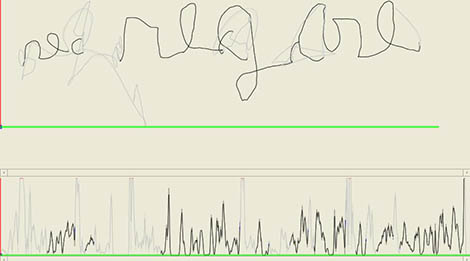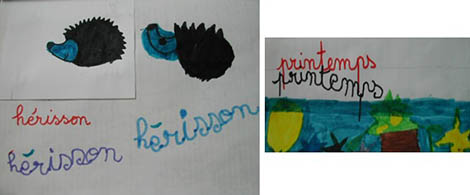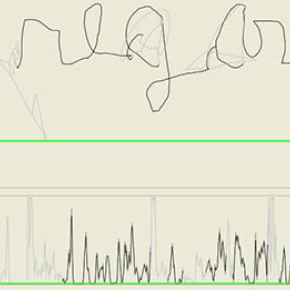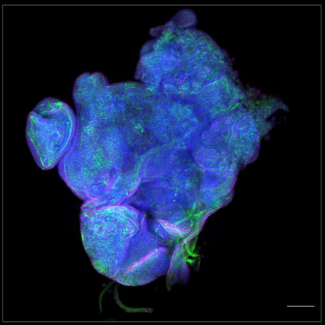
Dyslexia: when spelling problems impair writing acquisition
Dyslexia is a learning difficulty which affects the ability to adopt the automatic reflexes needed to read and write. Several studies have sought to identify the source of the problems encountered by individuals with dyslexia when they read. Little attention, however, has been paid to the mechanisms involved in writing. Sonia Kandel, Professor at the GIPSA-Lab of the Université Grenoble Alpes (CNRS/Université Grenoble Alpes/Grenoble INP) and her team1 decided to look at the purely motor aspects of writing in children diagnosed with dyslexia. Their results show that orthographic processing in children with dyslexia is so laborious that it can modify or impair writing skills, despite the absence of dysgraphia in these children. The findings of this study are published in the November 2017 edition of Cognitive Neuropsychology.
- 1This research was carried out together with the CRTLA, a specialised centre in language pathologies and learning at the Grenoble Alpes university hospital (CHU), and the Research Centre on Cognition and Learning (CeRCA - CNRS/Université de Poitiers/Université de Tours).
As soon as a child starts school, it is essential that he or she learns how to write – a skill they are called upon to use constantly. Certain students, however, have trouble mastering this process. Many of these children suffer from dyslexia, and despite presenting no motor disorders, experience greater difficulties in writing than in reading.
A series of studies conducted at the GIPSA-Lab in Grenoble revealed that handwriting is not a simple manual process. Researchers especially focused on the relationship between learning how to spell and the physical writing process. For example, they observed that the gestures involved in writing M-O-N are easier to execute in a word that is pronounced as it is spelled, (e.g. “montagne”) than in a word that is orthographically irregular (e.g. “monsieur”).
Working with the CHU Grenoble Alpes and CERCA in Poitiers, researchers then turned their attention to dyslexic children. Dyslexia weakens spelling skills, even when the child presents no motor problems. By varying the degree of difficulty in words to spell, researchers were able to analyse the impact of spelling process disorders on handwriting. Tests consisted in writing different categories of words: regular and irregular, common and rare, sensical (ex: futur) and pseudo, non-sensical words (ex: furut). To understand exactly how spelling affected handwriting, researchers recorded participants' writing gestures on digital tablets.
Analysis revealed that the act of writing irregular and pseudo words had a particularly noticeable impact on the hand movements of dyslexic children. Spelling became so difficult that it interfered with, and, in some cases, impaired their efforts to write. The children produced irregular, and sometimes, unreadable shapes. Often, such individuals are wrongly identified as “dysgraphic”, a condition in which mechanical difficulties affect handwriting. Inaccurate diagnosis results in ineffective treatment therapies and can lead to discouragement in the child.
To provide effective support to dyslexic children, this research suggests that precise diagnosis is needed, along with a treatment protocol that combines spelling and motor aspects.

The word “regard” written by a child with dyslexia
Above: Black lines show what the child actually wrote on the page; grey lines, recorded by the tablet, show in-air movements when the child paused. This example shows that the child started to write; stopped, then continued. The result is an irregularly produced word which presents a spelling mistake at the end. Below: Evolution in speed over time. Grey lines show in-air movements recorded by the tablet.

The word “cuvette” written by a child with dyslexia.
The child had serious difficulties with the double “t” in this word. Black lines show what the child actually wrote on the page; grey lines, recorded by the tablet, show in-air movements when the child paused. Blue squares indicate that the child lifted his or her head to look at the spelling of the word on the computer screen.

Copying of a text displayed on a computer screen. The child with dyslexia wrote: “Le monstre poilu vivait dans une caverne sombre humide et grise au milieu d'une for…”. Black lines show what the child actually wrote on the page; grey lines, recorded by the tablet, show in-air movements when the child paused. Blue squares indicate that the child lifted his or her head to look at the text on the computer screen.

Irregular words written by a child with dyslexia: hérisson, printemps (words in red were written by the teacher as a model).
The impact of developmental dyslexia and dysgraphia on movement production during word writing. Sonia Kandel, Delphine Lassus-Sangosse, Géraldine Grosjacques and Cyril Perret. 22 November 2017, Cognitive Neuropsychology. DOI: View web site


